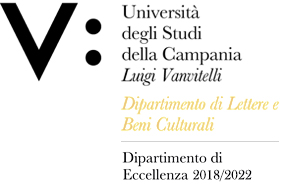Andrea ZEZZA
Insegnamento di STORIA DELL'ARTE MODERNA
Corso di laurea magistrale in ARCHEOLOGIA E STORIA DELL'ARTE
SSD: L-ART/02
CFU: 6,00
ORE PER UNITÀ DIDATTICA: 30,00
Periodo di Erogazione: Primo Semestre
Italiano
| Lingua di insegnamento | Italiana |
| Contenuti | Raffaello pittore |
| Testi di riferimento | Konrad Oberhuber, Raffaello. L’opera pittorica, Milano, Electa 1999 (fuori commercio e di difficile reperimento, disponibile in biblioteca e sulla piattafoma didattica); |
| Obiettivi formativi | Gli studenti acquisiranno conoscenze per affinare le capacità di comprensione della storia della pittura del primo Cinquecento, con particolare attenzione all'attività di Raffaello . |
| Prerequisiti | Il corso presuppone una conoscenza pregressa di tipo manualistico della storia dell’arte italiana del Quattro e del Cinquecento. Gli studenti che non hanno mai affrontato questo tipo di studi potranno recuperare su un buon manuale per le scuole superiori (testo consigliato: P. De Vecchi, E. Cerchiari, Arte nel tempo, Milano, Bompiani, 1991-1992 o ristampa successive, volume 2 |
| Metodologie didattiche | Lezioni frontali, esercitazioni/seminari, sopralluoghi, partecipazione a convegni e conferenze |
| Metodi di valutazione | Esame finale orale |
| Altre informazioni | La frequenza è obbligatoria. Gli studenti che, per validi e comprovati motivi, non potranno seguire le lezioni (frequenza inferiore all’80%) dovranno concordare un diverso programma con il docente |
English
| Teaching language | Italian |
| Contents | Raphael as a painter |
| Textbook and course materials | Konrad Oberhuber, Raffaello. L’opera pittorica, Milano, Electa 1999 |
| Course objectives | The students will acquire the necessary knowledge to refine their understanding of the italian paintings in early XVI century, with a special attention at Raphael and his workshop. At the end of the course, the students will gain the methodological tools necessary to apply the knowledge to a specific field of inquiry. |
| Prerequisites | General knowledge of History of Art in Italy, 15th-16th centuries. |
| Teaching methods | Lectures, inspections, seminars, conferences |
| Evaluation methods | Oral examination. |
| Other information | Attendance is required. Students who cannot attend must contact the teachers and request an alternative syllabus |








